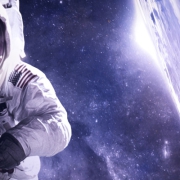Forget Goldilocks – we won’t need terraforming
It’s a part of popular science today. One day the human race would leave planet Earth and go to other places and to make them a little more palatable to our balmy needs, we would terraform those places.
There are terraforming proposals for all terrestrial planets and the moon. There are proposals to hollow out Asteroids and other celestial bodies and also to establish submarine bases on Jovian and Saturnian moons.
They differ widely but they all have one thing in common. Making life comfortable for a being that needs an environment with a certain atmosphere, certain pressure levels, a very narrow temperature range, and also pretty copious protection from radiation.
This all makes terraforming a colossal enterprise and this is also the reason why it is still the exclusive realm of science fiction. And it will remain so.
There are multiple ways how we can conceive living off Earth. Living on a planet or a moon is just one of them.
It is hard to understand our affection for planets and other so-called natural bodies. They are what they are and this is mostly pretty inhospitable for the human race.
It would be cheaper to build straight in space. There are no restrictions to anything. Theoretically, space stations can be as big as the mind (and resources) allow. They can be stationary or move freely if there is any need to do so. They can be built at the right distance of whatever you are looking at and can offer optimized environmental solutions straight from the start.
They can be those giant cans we could potentially live on in a far future from now. Pick your favorite sci-fi flick and you are swamped with endless design options and flavors. The human phantasy is the limit.
All those options don’t exist on a planet. You deal with what you find and that is usually pretty inhospitable. Not convinced?
In our solar system, only the earth exhibits the features required for us humans to live. Go to Mars, the balmiest place after Earth, and without a space suit, you would quickly suffocate. Its atmosphere is not thick enough for us to breathe plus its parts would not be what we want to get into our lungs.
Besides, its Magnetosphere is not strong enough to build a radiation shield similar to the one we enjoy on Earth and that protects us from hypercharged particles from the sun but also interstellar and intergalactic radiation.
But even if that would be taken care of, a really warm summer day on Mars would still be freezing minus 20 degrees Celsius and that’s on the equator. The ice on the poles is partly CO2 that has frozen out as winters there can go as low as minus 120 degrees Celsius.
And that’s as friendly as it will get. Getting this to earth-like conditions is going to be an incredibly wasteful undertaking as the same level of effort would probably build us enough room on space stations for the entire human population to live on them and not feel that they are actually in space.
Settling heavenly bodies for living is foolish, expensive, uncomfortable, and pretty scary. Straight space is going to be far more convenient.
But let’s push this a little further (as I had already done in another post). Even if we chose to go there and be it for our enjoyment only, even if we settled on planets for some form of melancholy that requires us to walk on planets rather than live as well as we can. Even if we forsake all the stuff I earlier said because of some reason I cannot grasp, it right now.
Would we still need to terraform the place?
You sure have seen countless movies where terraforming a planet was part of the plot. One of the more prominent ones was Alien Sequel 2 where a bunch of Space Marines get their asses kicked by a xenomorph. The planet where it all takes place has been colonized and part of the colonization program was a huge atmosphere changer.
I just don’t want to belabor the countless nonsensical features of the plot but does it not seem a bit mad when in 2015 the US Army works on robot soldiers and thinks it will have them ready within a little less than a decade, that in 2900, there will still be flesh and bones version of those same soldiers jumping out of spaceships to kick some aliens ass?
Part of almost every sequel of Alien was an artificial being, a human-looking android. In Alien 2 it was Bishop, in the prequel to it all – Prometheus – it was David. And looking at David we have a much better feeling about what we might look like after those centuries of medical research.
Don’t you think that we would have morphed into something that does not need to breathe, that would endure extreme cold and heat, and would not need food or water? If this all goes away as an issue for much of the human race, why would we want to terraform anything? No breathing and it becomes irrelevant what air there is or if there is any air at all. Sustaining temperature extremes you can enjoy the surface of Mercury or Pluto unprotected.
And so it goes on.
Terraforming is an idea from a time when most humans still believed that we would remain flesh and bones forever. We may have planetary colonies, settlements, and whatever else kind of stuff in space but I doubt it will be the tin can version. Expect humans to roam everywhere. It won’t matter how Goldilocks may look to 20th-century man or not.


















Leave a Reply
Want to join the discussion?Feel free to contribute!